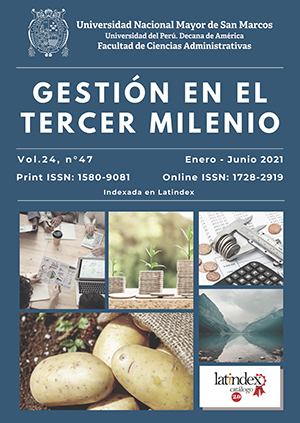Implementation of the “SERVIR” regime in the analysis of positions of designated servants of a public peruvian university
DOI:
https://doi.org/10.15381/gtm.v24i47.20578Keywords:
Civil Service, SERVIR-Regime, Job-Analysis, Designated-PersonnelAbstract
The investigative purpose of this article is to determine the incidence of the civil service in the analysis of positions of the designated public servant, both in the situational analysis of the university workers and in the efficiency of the implementation processes. This study has a descriptive level, the investigative method will be logical, the instrument that was used was reviewed by the authors and was certified by the opinion of experts in the area of human resources with a Cronbach’s alpha that resulted in 0.93, the The sample is of 98 public servants who work in the UNMSM, who perceive that a good situation of a servant in the education sector will assume the challenge to be able to adapt to the new regime, in addition to training for equitable remuneration that allows greater correspondence to the work, so a server who performs a certain job receives the same amount of payment as another, in different offices within the same institution. As a result of this research, it is observed that it retains a significant influence, in terms of training and tasks assigned as new job analysis objectives in the new regime for the state servant, which must be constantly evaluated by the institutional management of the National Authority of the Civil Service (SERVIR).
Downloads
Published
Issue
Section
License
Copyright (c) 2021 Manuel Jesus Landa Rojas, César Astete Flor, José Alberto Gamonal Montoya

This work is licensed under a Creative Commons Attribution 4.0 International License.
THE AUTHORS RETAIN THEIR RIGHTS:
(a) The authors retain their trademark and patent rights, and also over any process or procedure described in the article.
(b) The authors retain the right to share, copy, distribute, execute and publicly communicate the article published in Gestión en el Tercer Milenio journal (for example, place it in an institutional repository or publish it in a book), with acknowledgment of its initial publication in the Gestión en el Tercer Milenio.
(c) Authors retain the right to make a subsequent publication of their work, to use the article or any part of it (for example: a compilation of their work, lecture notes, thesis, or for a book), provided that they indicate the source. of publication (authors of the work, magazine, volume, number and date).






